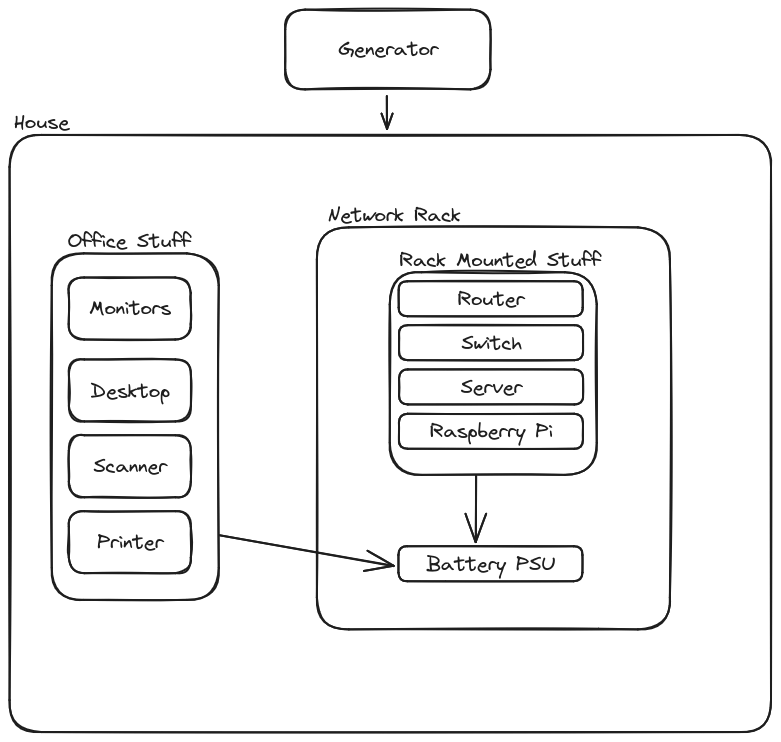
Building a Robust Home Lab
I’ve crafted a home lab setup that provides the stability and flexibility, allowing me to work remotely without interruption. Let’s dive into the architecture.
The Heart of the Operation: Network Rack
At the center of my home lab is the network rack, a hub that houses the critical components of my network.
- Router: The gatekeeper of my network, managing traffic and keeping my data flow efficient and secure.
- Switch: This unsung hero connects the multitude of devices, ensuring seamless communication between all my hardwired devices - which is pretty much everything in my house that doesn’t move. My server, Raspberry Pi, desktop, printer, scanner, and all smart TV’s connect to this switch.
- Server: The powerhouse where I run all my home automation tools via Docker, and store files in my NAS.
- Raspberry Pi: This tiny but mighty device serves as a VPN. I could move the VPN over to the main server but I set it up this way and it’s been working, so I haven’t changed it!
The Uninterruptible Powerhouse: Battery PSU
Stability is key in a home lab. That’s why my network rack is backed by a battery PSU. Power outages? Fluctuations? They’re no match for this setup. It means my network stays up, my sessions remain intact, and my work continues uninterrupted.
Office Essentials: The Developer’s Toolkit
Adjacent to the network rack is my office setup—a triad of productivity.
- Monitors: Dual screens that serve as windows into my virtual workspaces.
- Desktop: The command center where I spend most of my hours, equipped with the specs to handle heavy lifting. Funny enough, my new job has provided me with a company laptop so I don’t use the desktop as much anymore! I have the laptop and desktop hooked up to the same peripherals via a KVM switch though.
- Scanner and Printer: For those moments when the digital needs to become physical. I wrote about my scanner setup here
The Silent Guardian: Generator
Lastly, ensuring that the entire lab is safeguarded against prolonged power outages, stands the generator. I have a 20kw generator that automatically powers on if there’s an outage, courtesy of the former homeowner. So the battery PSU really just needs to bridge the gap for about 10 seconds until this bad boy kicks on and powers up the whole house.
Conclusion
This home lab is a playground for me, and I’ve learned a lot of new technologies by tinkering. Having it benefit my work by creating a stable development environment with backup power is a huge benefit as well. As a full time remote employee it’s comforting to know that regardless of conditions I won’t be letting my team down due to a loss of power.